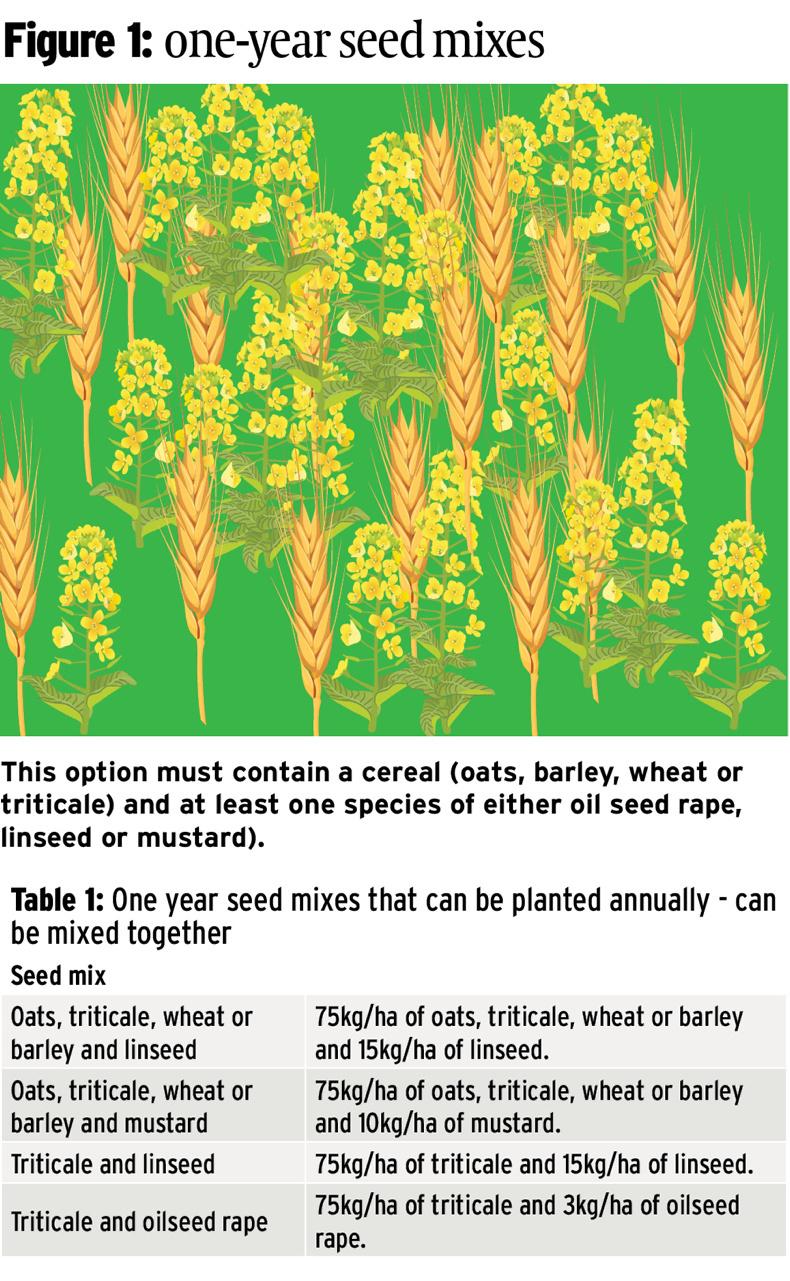Approximately 20,000ha of wild bird cover will be established this year through GLAS on 10,000 farms. The deadline for sowing wild bird cover is 31 May.
Some farmers are familiar with the process since last year, while for others accepted into GLAS III this year it is a new phenomenon.
There are two main approaches farmers can take to sow their wild bird cover – the one-year or the two-year mix. Figure 1 shows what’s involved in each mix and the corresponding seeding rates where a drill is used. Generally, the one-year mix is a more popular option because kale grows better in fertile, free-draining soils.


Remember, the minimum area is 1ha where it is taken as a priority action and 0.25ha where it is taken as a general action and maximum area for payment is 3ha.
We have covered the main objectives of wild bird cover in a recent issue of the Irish Farmers Journal. The main benefits of the crop are for wildlife, especially rare birds and small mammals. The level of machinery work needed to get the crop established depends on the site.
Catherine Keena says the process is similar to sowing grass seed and the main requirement is to have a fine, firm seed bed for good establishment. Most farmers will plough to ensure trash is buried prior to sowing.
Below we have laid out best practice for sowing the one year mix.
1 Pre-sowing weed control if necessary: weeds such as thistles and docks should be sprayed before sowing takes place.
2 The area should be ploughed first to bury the trash. Some farmers won’t have to plough and discing twice will be enough to prepare a seed bed.
3 After ploughing, the area should be cultivated.
4 Oats can be broadcast with a fertiliser spreader or drilled into the soil. If you broadcast the oats with a fertiliser spreader the area should be cultivated again to bury the seed. Otherwise crows might attack the crop.
5 The area should be rolled.
6 Next the linseed can be broadcast with the fertiliser spreader. The linseed may have to be mixed with fertiliser or granlime because granules will act as a carrier for the smaller linseed.
7 The area is rolled for the final time.
8 The crop of wild bird cover should be left unharvested for the year.
9 After 15 March, animals are allowed access to break down the crop in preparation for the following year’s crop.
Broadcasting seed rates
Oats: 110kg/ha.
Linseed: 20kg/ha.
Kale: 4kg/ha.
Sowing depth
Cereals: 5cm.
Small seeds: 1cm.
Cost
It costs approximately €375/ha for a contractor to plough and drill wild bird cover. Oat seed costs approximately €55/ha and linseed costs €90/ha.






 This is a subscriber-only article
This is a subscriber-only article




















SHARING OPTIONS: